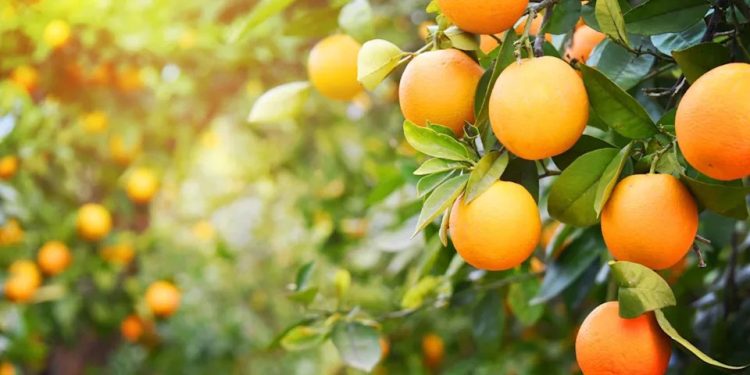Whether it’s an endless supply of apples or neverending oranges for your morning juice, planting fruit trees in your yard can be as visually appealing as it is delicious to enjoy. But according to pest experts, growing fruit-bearing plants or trees can end up bringing plenty of rodents and birds into your yard looking to feast on your harvest—who will likely be followed close behind by snakes looking to catch a meal themselves.
“Many snake species feed on rodents, such as rats and mice. A high population of rats and mice in your backyard is like an open invitation for snakes,” Ryan Smith, an organic pest control expert and owner of Ant and Garden Organic Pest Control, tells Best Life. “If you have an ongoing rodent infestation at home, it’s best to control and treat it first with the help of a pest control expert.”
Since pests such as mice and rats love fruit as much as you do, experts suggest trying to maintain your yard like you would your kitchen if you happen to have fruit trees or bushes on your property. Make it a point to remove all fallen or rotten fruit from the base of the trees before their flesh and seeds can become a full-fledged feast for the very pests that will attract snakes into your yard.
Experts cite citrus trees as a major draw for certain rodents who love to feed on the fruit they grow, but other common bushes and trees could also be a major draw. “Rodents love foods that are sweet and high in water content such as blueberries, raspberries, blackberries, apples, pears, and more,” Denise Trad Wartan, General Manager of Trad’s Pest Control in Jacksonville, Florida, tells Best Life.
Anyone serious enough about gardening to keep fruit trees or bushes has likely thought about making their own compost if they’re not doing so already. But if you’re composting old fruits, vegetables, and foliage incorrectly, you could be bringing snakes into your yard by inadvertently creating a mini-ecosystem that can support them.
If you’re dealing with a lot of unwanted produce, dumping fruits and veggies into your compost pile too quickly for it to break down can often begin attracting rodents such as rats and mice looking for a meal and shelter. Of course, this steady food supply will soon attract snakes, who will also appreciate the warmth of the pile and the hiding places it can provide while potential meals come right to them.
To avoid setting up a buffet for a mini food chain, make sure to add your fallen fruits and vegetables slowly and evenly so as not to overwhelm your pile. You could also invest in a heavy-duty plastic compost tumbler, which raises your compost off the ground and encloses it within a chamber that rodents can’t enter, according to the experts at The Turfgrass Group.
Besides the produce growing on your property, the shape and contour of what you’re growing can also significantly affect the kind of wildlife it will attract. Experts point out that having dense, ground-covering bushes, shrubs, or foliage gives snakes the type of protection they need to feel right at home. Cutting back or pulling up anything that looks like it might be cozy enough for a snake to make its home can be an easy way to make your yard less inviting to them.
“Any place that is low to the ground and can provide snakes with a dark hiding place will draw them to your yard,” Charlie Church, owner of pest control company Getem Services, tells Best Life. “Snakes, much like other creatures, stay places where they have access to food, water, and shelter. They like to hide out around the base of your home where there isn’t a lot of foot traffic from predators, so when planting trees and shrubs around this area of your home remember to keep them a few inches off the ground so snakes won’t be tempted to build their homes in them.”
Of course, you should also take care to avoid planting anything that might attract rodents, as well. “Common plants that attract rats and mice include ivy, cypress and palm trees, and juniper bushes,” Kent Edmunds, CEO of Paul’s Termite&Pest Control, which has offices in Jacksonville and Tallahassee, Florida, tells Best Life. “These plants offer shelter and food for them.”










Discussion about this post